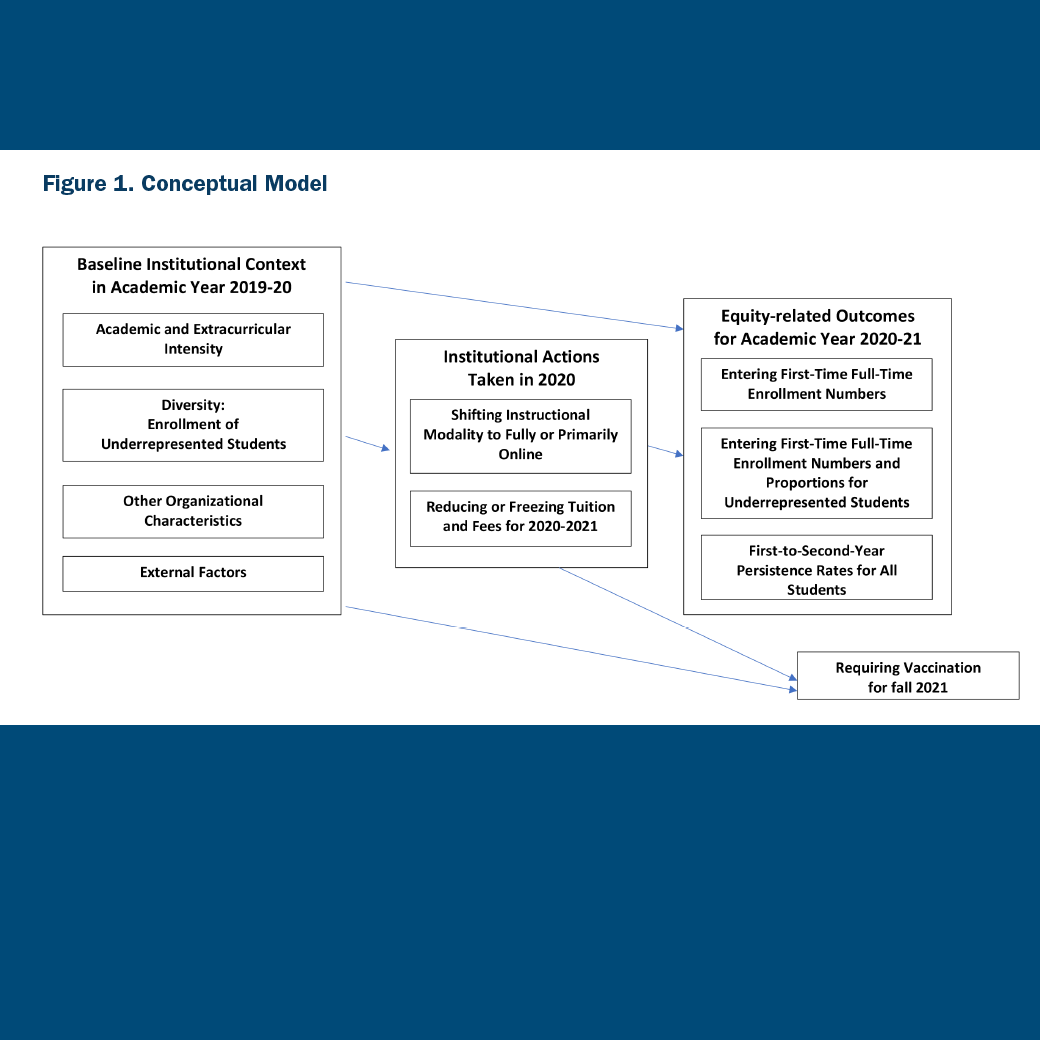As the pandemic emerged in early 2020, educators and policymakers grew increasingly concerned about its potential impacts on access-oriented colleges and equity. How would underrepresented populations fare in the context of radically changed campus operations?
Summary
The pandemic was seen by many as an existential threat to access-oriented colleges (i.e., those with less-selective admissions rates and wide-ranging test scores among enrolled students) as well as a major barrier for the underrepresented minoritized (URM) students they serve. As college leaders were forced to make difficult choices about online instruction, tuition reduction, vaccine mandates and other issues, press outlets were publishing dire predictions about the colleges’ futures. This paper examines how access-oriented colleges responded to the pandemic’s challenges and how their actions affected students and the institutions’ financials.
Key Insights
- First-year full-time undergraduate enrollments declined on average in the 2020-21 academic year at the access-oriented colleges examined, but declines were less steep among URM students.
- A minority of the institutions adopted fully or primarily online instruction in 2020-21—22% did so in the fall of 2020 and 35% by the spring of 2021.
- 16% of institutions chose to reduce or freeze tuition in 2020-21.
- 45% of institutions adopted some form of vaccine mandate for students for the fall of 2021.
- Online instruction in fall 2020 played a role in limiting the number of entering URM students but did not affect the proportion of such students or first-to-second year retention of students overall.



